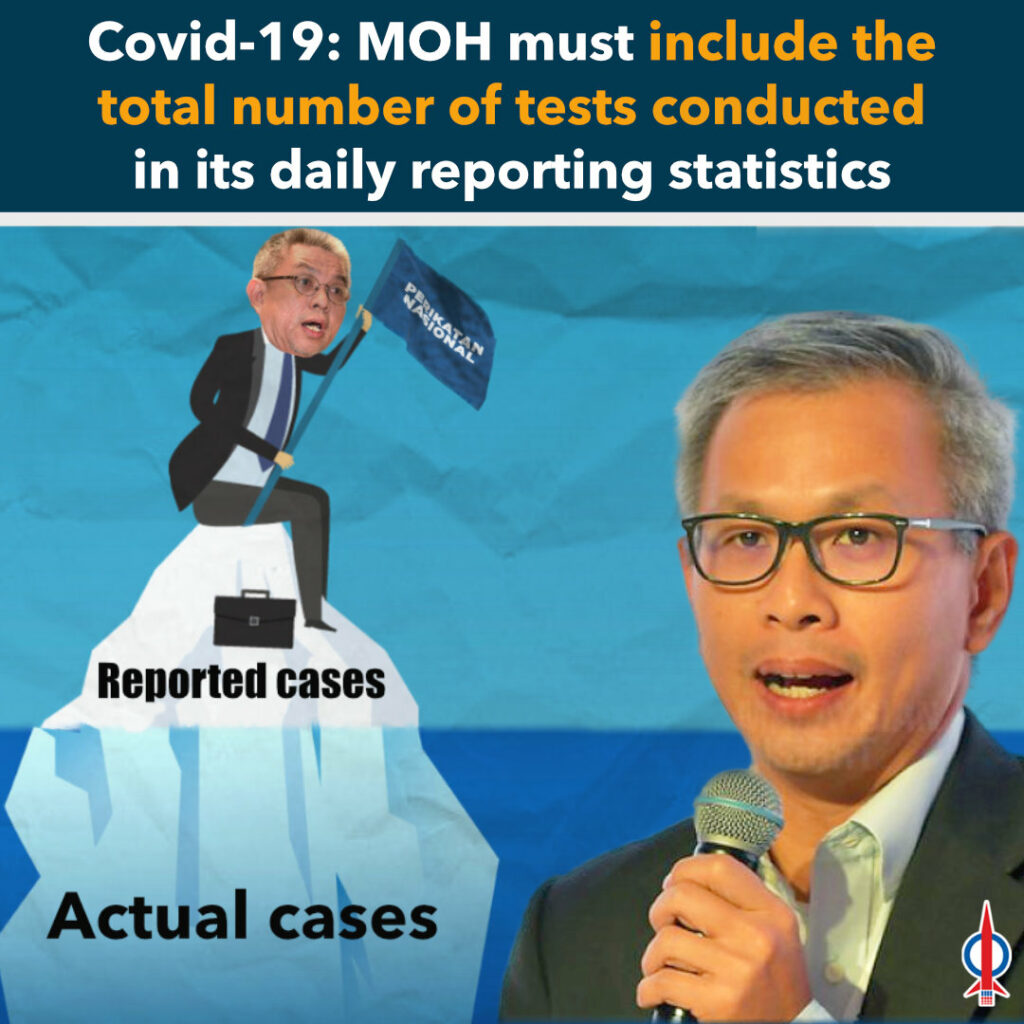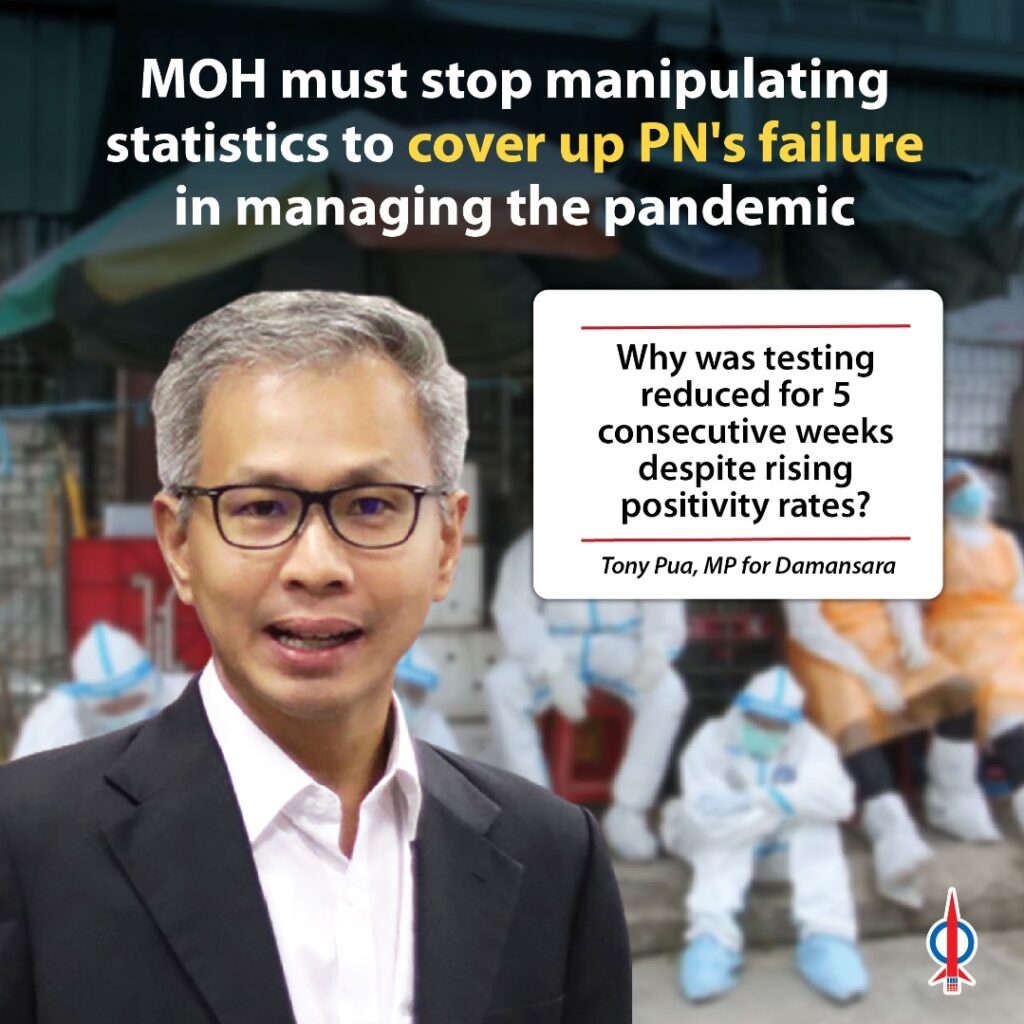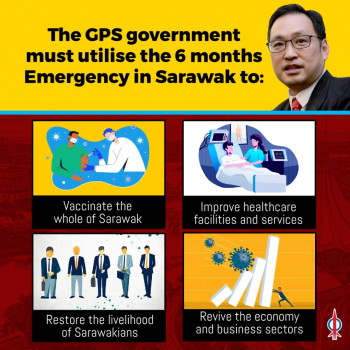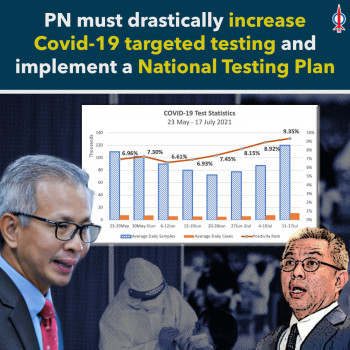Media statement by MP for Damansara and DAP National Publicity Secretary, Tony Pua in Kuala Lumpur on 27 July 2021:

The Ministry of Health must immediately update their daily reporting data to provide a more contextual reflection of their Covid-19 statistics
On Sunday, 25 July 2021 – the Ministry of Health (MoH) announced a daily record of 17,045 positive Covid-19 cases. This was a third consecutive daily record registered, after reporting 15,573 and 15,902 cases on 23 and 24 July respectively.
Yesterday, MoH announced a much welcome reduction of new cases to 14,516. Many perhaps would have breathed a sigh of relief.
Many news agencies also assisted in perpetuating the impression of a reduced incidence of positive cases. If not for the fact that Malaysia also registered a record 207 daily deaths, the reports would have been even more hopeful.
Unfortunately, it was obviously too good to be true.
For 23 to 25 July, the total daily test samples taken were 137,326, 155,193 and 137,214 respectively. The resultant positivity rates were 11.34%, 10.25% and 12.42%.
For 26 July, the total test samples taken was only 119,190, providing a positivity rate of 12.18%.
| Date | Total number of Covid-19 tests conducted | Positivity rate |
| 23/7 | 137,326 | 11.34% |
| 24/7 | 155,193 | 10.25% |
| 25/7 | 137,214 | 12.42% |
| 26/7 | 119,190 | 12.18% |
Effectively, the reduced number of positive cases announced yesterday was pretty much entirely due to the reduction in the number of tests carried out (on a Sunday).
Therefore, for the media to provide accurate reporting and for Malaysians to receive the most accurate status and context of the pandemic in the country, the Director-General (DG) of Health must update his daily reporting statistics to include the total number of corresponding test samples.
With the test samples and the resultant positivity data, even better if they were reported as a weekly trending data to remove data lumpiness and statistical noise, Malaysians will be able to see clearly if the MoH has been carrying out sufficient tests, especially since the current positivity rate of more than 12% is more than double the 5% benchmark recommended by the World Health Organisation.
In addition to the above, MoH must also now include new statistics in its daily reports given the changing pandemic landscape since it first surfaced more than a year ago.
For example, the DG includes in his statement the totalnumber of cases who are warded in the Intensive Care Unit (ICU), the number of cases who require ventilators as well as the number of deaths for the day. It will be extremely useful if these data can also be accompanied by vaccination data, as to whether the patients have received partial or full doses of the vaccines.
The DG has also recently updated his daily reporting format to include daily numbers of patient categories (Category 1 to Category 5) to classify newly positive cases for the day. However, as my colleague, Dr Kelvin Yii (MP Bandar Kuching) has pointed out a few days ago, a patient who was first identified as Cat 2, his or her condition could very well deteriorate to Cat 4 in a few days.
Hence it will be better for the Ministry to categorise all active cases on a daily basis, instead of just new daily cases.
Through daily reporting of categories, we can see the dynamics of our patients, whether there is high prevalence of deterioration or even improvements during that period of time.
Furthermore, all the above data should be made available at the granular level by state and districts at GitHub so that policy-makers and data analysts will be able to prescribe remedies at a targeted level.
Other information which were perhaps more important in the past, but less so today, could perhaps be made available in the GitHub for data analysts to crunch further, instead of being part of the DG’s daily statement. This is because on their own, they may provide a distortionary view of the circumstances. This will include cluster information which is still being reported daily. The reason why the cluster information may be distortionary is because the labelled clusters only form less than half of the total incidence of Covid-19 positive cases. Hence reliable conclusions cannot be derived from the currently reported cluster information (e.g., total clusters, total new clusters, total ended clusters, total active clusters).
More accurate data, with a stronger emphasis placed on ICU, ventilator and death statistics instead of the daily total new Covid-19 figure will also go a long way towards helping shift the Malaysian paradigm from one focused on “Zero Covid-19” to one which understands the ‘new normal’where there will always be perhaps several thousand cases, but that is acceptable as long as the number of cases in ICU, requiring ventilator and deaths are brought down to a minimum.





